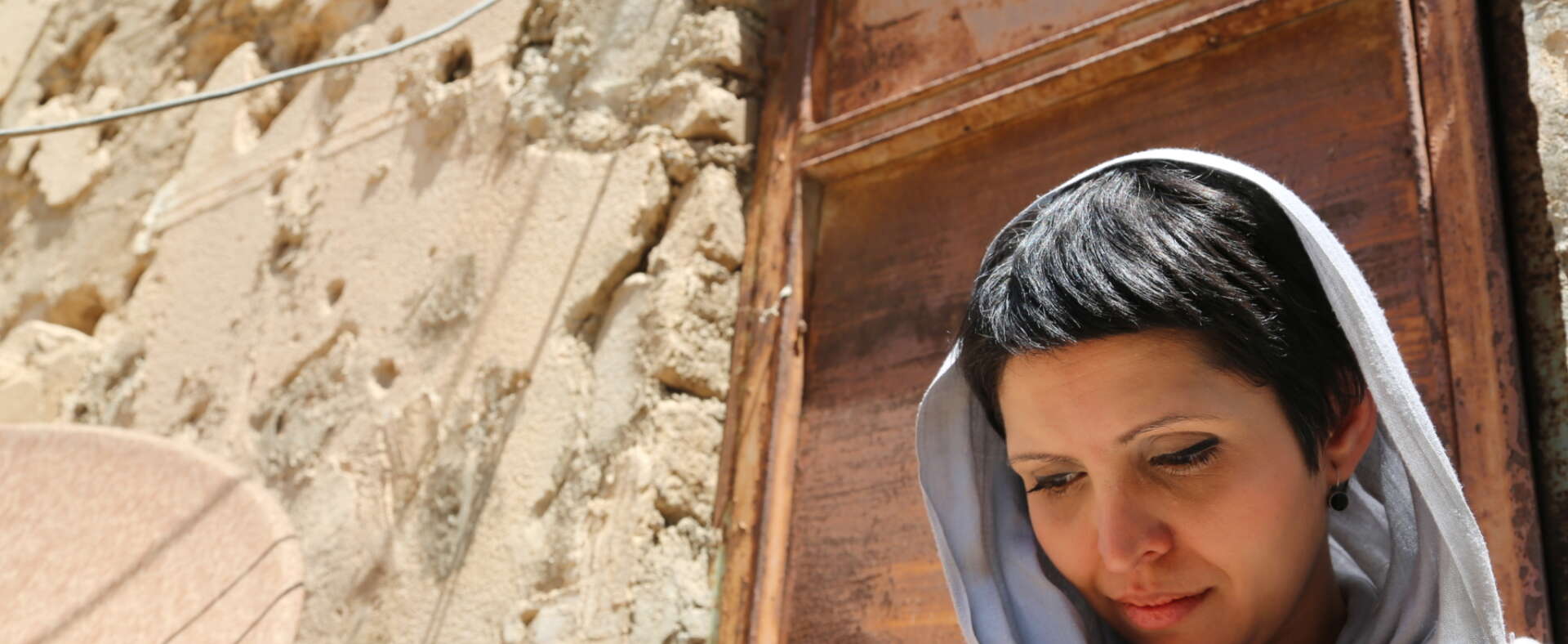
IDFA: Stronger than a bullet competes for Best First Appearance. Iranian born Swedish director Maryam Ebrahimi speaks to us.
Maryam Ebrahimi isn’t a newcomer in documentary filmmaking. She has produced five acclaimed films for Nima Films and co-directed the International Emmy-Award winning film No Burqas Behind Bars. But Stronger than a Bullet is her very first full-length documentary work from idea to screen.
She has followed former war photographer Saeid Sadeghi as he remorsefully looks back at the heroic images he took during the Gulf War that lured mostly young men to the battlefield as they fought as martyrs.
What was your personal motivation for making this film?
Maryam Ebrahimi: I grew up in Iran and I was very closely connected to the Iran-Iraqi war. As a child, with my family, we spent two years between 1983 and 1985 in one of the most dangerous cities in southern Iran that was intensely bombed by the Iraqi. I was going to school, but every day I could witness the war and mostly young men being killed. A good friend of mine who was 13 enrolled and died as a martyr. That was traumatic for me. The train in the film that takes me and Saeid Sadeghi from Teheran to southern Iran, is the very train I took with my family. With this film, I wanted to tell a story that millions of people from my generation relate to but never dared to talk about, the story of how the regime used war propaganda to combat its enemies.
How difficult was it for you to film in Iran this anti-regime documentary?
ME: Very difficult. When you take your camera and audio material you can get arrested. But we had planned the shooting well and used our connections in Iran; we were extremely careful and sometimes, I had to distance myself from my team who helped me a lot.
When did you start to investigate this story? Did Saeid Sadeghi approach you?
ME: The film needed a lot of careful research as it’s something that happened 38 years ago. I met several people who had taken part in what was called the ‘Holy Defence Industry, set up to motivate young Iranians to volunteer for war. Everybody was a bit critical, but Saeid was the most vehement in denouncing the role of his photographs in the war propaganda.
The train journey in the film is a way to connect the past with the present and a metaphor for Saeid’s personal journey towards redemption. How did he go through this cathartic experience? Was he weakened or strengthened in his determination to undo the damage of his propaganda images?
ME: I did several interviews with him and started a psychological and physical journey with him. We created a structure for the film so that he could talk about the ugly side behind the glorification of war. I experienced how the process helped him deal with complex feelings from his past. He felt so peaceful when he finally met the survivors who were youngsters during the war. The project gave him a new sense of purpose to his life.
How long did it take you and Saeid to find the survivors?
ME: It took quite some time, and sometimes he had to travel more than 20 hours to meet with the survivors. But he was determined to find them and he had good connections.
It’s chilling to hear a survivor say: ‘it’s easy to die when you have a goal’…You understand how the young Iranian fighters had been brainwashed to believe this was a Holy War and it’s easy to draw comparisons with ISIS and their own ideological propaganda….
ME: The core of the film is that the first 18 months of the war were about defending Iran from Iraqi attacks. Gradually, with mass propaganda, things started to change. The regime started to spread images of Imam Hussein and the concept of martyrdom in which people were promised eternal paradise by sacrificing their lives to God. But martyrs were willing to sacrifice their own life whereas ISIS fighters want to kill the enemy.
And today unfortunately it’s even easier for religious propaganda to spread through the internet and social media…
ME: Yes at the time the propaganda material was very basic, made of collage, photos, with bright colours. Now unfortunately the web is a very effective tool to spread propaganda. It’s important for young people to understand the dangers of manipulation.
On a production side, how was the financing of the film and do you know when and how the film will be distributed?
ME: It’s still a bit difficult to finance documentaries. You have to pitch at different forums etc. But this time around it was easier for Nima [Sarvestani] and I as people were genuinely interested in the subject and we have won many awards with our previous films. In terms of distribution, the film has been pre-bought by several TV stations including DR, SVT, YLE, NRK, TVO, ARTE France. Deckert Distribution handles world sales and we hope to have a few theatrical deals after IDFA.